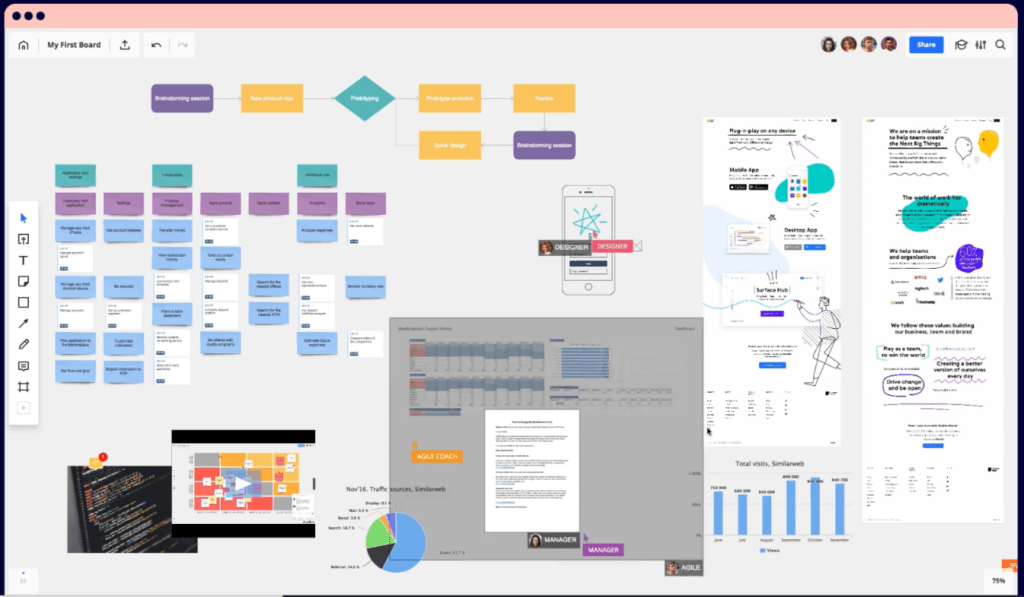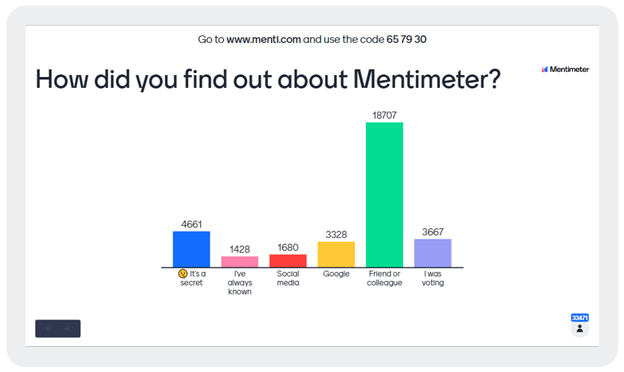Collaboration Tools We Love
February 25, 2021 in Employee Engagement & Resiliency, Technology & Tools, The Consulting Experience
By Autumn Thomas
Working during the pandemic has brought significant changes to the workforce. Teams abruptly shifted from physical to digital workspaces. Many of us transitioned from working in the same office as our colleagues to working from home with team members scattered across the country. Although the need to collaborate remained, it has become infinitely more complicated. Gone, for now, are the days of stopping by a coworker’s desk to get their feedback on an idea or a quick glance at a document.
The larger group meetings where ideas were created, shared, and discussed have become less engaging because only one person can express an idea at a time. Often parallel conversations pop up in chat messaging apps and draw focus from the primary discussion. While this shift brought many initial inconveniences associated with the pivot, technological tools have done a brilliant job of bringing us together to work efficiently and collaboratively to meet our needs and maintain a high-level of efficiency.
Miro
One such tool is the online whiteboard. If you’ve been on a Zoom call or on WebEx you’ve probably used this tool to quickly sketch out ideas as a team, but you’re probably aware that these built-in versions are limited in their capabilities. There is no way to prepare content on the screen in advance of the call or customize the tool to meet a specific focus of for the discussion.
Our preferred alternative is Miro, which can be used on any device. Miro provides a large range of templates (Stakeholder Register, Retrospectives, Mindmapping, Strategic Planning) or just a standard blank white board. You can invite members within in your team, organization, or external participants to edit, create, and collaborate all in real time. Boards can be created ahead of time to increase the amount of time spent collaborating and each participant can add in their own ideas. With Miro there is no limitation on the number of participants who can simultaneously work collaboratively with one another. This versatile tool allows you to skip the stop and start of conversation that we’ve all experienced on Zoom calls.

Mentimeter
Miro allows for great collaboration during a meeting, but what about gathering feedback? Surveys built on platforms like SurveyMonkey can allow participants to share thoughts and opinions, but that doesn’t allow for the discussion of ideas in real time. For this capability we like to use Mentimeter, or Menti for short. This tool allows you to get real time feedback from participants that can help guide your discussions and increase meeting participation. Questions can be polls or opened and allow for participants to answer questions anonymously.
One of our favorite uses is during kickoff meetings so we can get feedback on what participants expect from a meeting, such as using the meeting as a working group session. Respondents can input multiple answers anonymously which can be discussed in a larger group setting. This allows for great collaboration and meeting direction. Moreover, responses are saved in Menti and can be utilized at a later date or sent out after a meeting as a decision point. Using Menti in a presentation improves engagement and team collaboration. Meeting participants can vote on ideas and make decisions that are stored for later use.

Both Miro boards and Menti surveys have helped bridge the gap between the need for working from home and improved team collaboration. While both tools have increased capability with the paid versions, the free versions still allow for increased team collaboration. We hope that these tools will help you in the future to better work with you team and clients!
What tools do you currently use to collaborate with your team? Let us know on LinkedIn!

Autumn Thomas is a Consultant in the Technology, Analytics, and Transformation Center of Excellence. Having graduated from Florida State University with a Master of Science degree in International and Comparative Education Studies, she has dedicated her career to helping those from underserved communities improve their access to equitable opportunities in systematic ways while also consulting with stakeholders to do more efficient and impactful work.